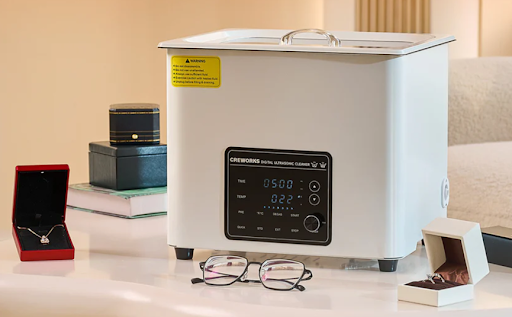When it comes to cleaning delicate items or intricate components, many of us still reach for the usual brushes, cloths, and chemicals. But no matter how much elbow grease you use, some things just don’t get thoroughly clean. Whether it’s the grime in your jewelry’s tiny crevices or the residue lodged inside mechanical parts, manual scrubbing can only go so far. That’s where ultrasonic cleaning steps in.
This technology isn’t just for industrial labs or medical settings anymore—it’s become a powerful, practical solution for home users, small businesses, and anyone seeking a safer, more effective way to clean. So why exactly is ultrasonic cleaning better than manual scrubbing? Let’s take a closer look.
How Ultrasonic Cleaning Works
Ultrasonic cleaning uses high-frequency sound waves (usually between 20 and 40 kHz) transmitted through a liquid cleaning solution. These sound waves produce microscopic bubbles in a process called cavitation. When the bubbles collapse, they release tiny but powerful jets of energy that dislodge dirt, grease, rust, and other contaminants—even in places you can’t see or reach.
This method is incredibly effective for cleaning:
- Jewelry and watches
- Surgical and dental tools
- Automotive parts
- Electronic components
- Glassware and lab instruments
If you’re looking for a reliable machine to get started, Creworks ultrasonic cleaners offer a range of sizes and power options to suit everything from delicate jewelry to heavy-duty engine parts. They’re known for combining durability with performance, making them a smart choice for both home users and professionals. The best part? The process is largely hands-off and requires minimal supervision.
The Limitations of Manual Scrubbing
Manual scrubbing is fine for basic tasks, but it falls short when precision, speed, and consistency are needed. Some common drawbacks include:
- Time-consuming: Cleaning by hand, especially small or detailed items, takes forever.
- Labor-intensive: Repetitive motion can lead to fatigue, especially in commercial settings.
- Can’t reach tight spaces: Brushes and cloths can’t effectively clean holes, grooves, or complex shapes.
- Risk of damage: Abrasive scrubbing can scratch soft materials, dislodge parts, or even cause corrosion.
- Inconsistent results: Manual cleaning depends on the user’s attention and technique, which can vary from person to person.
The Ultrasonic Advantage
Ultrasonic cleaners don’t just save you time—they deliver a deeper, safer clean. Here’s how:
1. Deep, Penetrating Clean
Cavitation bubbles reach microscopic cracks and holes that even toothbrushes can’t access. It’s ideal for items with intricate designs, hinges, or hidden joints.
2. Consistency
Every cycle delivers uniform results, making it a reliable cleaning solution for repeated use—especially important for industries with hygiene standards.
3. Efficiency
You can clean multiple items at once in just a few minutes. That means less downtime, especially in professional or industrial environments.
4. Gentle on Fragile Items
No scrubbing or abrasive contact means less risk of damage. Ultrasonic cleaning is ideal for delicate gemstones, vintage components, circuit boards, and more.
5. Eco-Friendly Options
Most ultrasonic cleaners use water-based or mild solutions. You’ll typically need fewer harsh chemicals, which is better for both your health and the environment.
Real-World Applications: Ultrasonic vs. Manual
Still unsure? Here’s how ultrasonic cleaning compares across real-life situations:
- Medical Tools: Manual cleaning may miss microscopic debris. Ultrasonic cleaners ensure thorough sterilization preparation.
- Jewelry: Toothbrushes can’t clean behind prongs or inside filigree settings—ultrasound can.
- Automotive Parts: Oil and carbon deposits in small channels and gears are no match for ultrasonic waves.
- Electronics: Safe, non-abrasive cleaning for PCB boards and sensitive components.
In each case, ultrasonic cleaning produces faster, safer, and more consistent results with less effort. Curious how it all works in practice? This general guide on how to use an ultrasonic cleaner breaks it down step by step—super handy if you’re just getting started.
Is There Still a Place for Manual Scrubbing?
Absolutely. For quick, surface-level cleanups or pre-rinsing visibly dirty items before an ultrasonic cycle, manual methods still work well. But when thoroughness, precision, and preservation matter, ultrasonic cleaning is the clear winner.
Final Thoughts
Ultrasonic cleaning isn’t just a fancy upgrade—it’s a smarter, more effective solution for modern cleaning needs. Whether you’re trying to restore an old heirloom or maintain high-precision tools, the results speak for themselves: faster, deeper, safer cleaning with minimal effort. If you’re ready to make the switch, Creworks ultrasonic cleaners are a great place to start. Known for reliability and performance, they offer a range of sizes to fit both home users and professionals. UtdPlug
